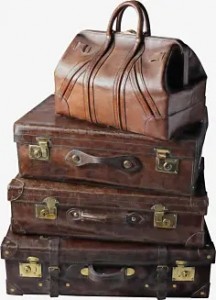Luggage has played a significant role in the history of human civilization, as it has evolved from simple bags to complex travel accessories that cater to our modern needs. This article explores the development history of luggage and its transformation throughout the ages.
The concept of luggage dates back to ancient times when humans first started to wander and explore new territories. In those early days, people relied on basic bags made from animal skins, woven reeds, and tree barks to carry their belongings. These primitive bags were limited in terms of capacity and durability and were primarily used for survival essentials like food, tools, and weapons.
As civilization progressed, so did the need for more advanced luggage. In ancient Egypt, for example, large woven baskets made of reeds and palm leaves were commonly used for storage and transportation. These baskets provided more space and better protection for valuables and personal possessions.
With the rise of the Roman Empire, travel became more commonplace and the demand for travel-specific luggage grew. Romans used trunks and chests made of wood or leather to carry their belongings during long journeys. These trunks were often adorned with intricate designs and symbols, reflecting the wealth and status of their owners.
During the Middle Ages, luggage became an essential part of trade and commerce, leading to further advancements in its design and functionality. Traders and merchants utilized wooden crates and barrels to transport goods across long distances. These early forms of luggage were sturdy and weather-resistant, ensuring the safe transport of delicate items such as spices, textiles, and precious metals.
The Industrial Revolution marked a major turning point in the history of luggage. With the advent of steam-powered transportation and the rise of tourism, the demand for travel bags surged. Leather suitcases with multiple compartments and metal reinforcements became popular among affluent travelers. These suitcases were designed to withstand the rigors of long journeys and were often personalized with initials or family crests.
The 20th century witnessed significant advancements in luggage technology. The introduction of lightweight materials such as aluminum and nylon revolutionized the industry, making luggage more portable and efficient. The development of wheels and telescopic handles further enhanced the convenience of travel, as it enabled individuals to effortlessly maneuver their luggage through airports and other transportation hubs.
In recent years, luggage has evolved to meet the needs of the modern traveler. Innovative features like built-in GPS tracking, USB charging ports, and smart locks have transformed luggage into highly functional and tech-savvy travel companions. Additionally, the focus on eco-friendly materials and sustainable manufacturing processes has made luggage more environmentally conscious.

Today, luggage comes in a wide variety of styles, sizes, and materials to cater to the diverse needs and preferences of travelers. From sleek and compact carry-on bags to spacious and durable checked-in suitcases, there is a wide range of options available to suit different travel requirements.
In conclusion, the development history of luggage reflects the evolution of human civilization and its ever-changing demands. From primitive bags made of animal skins to modern travel accessories equipped with cutting-edge technology, luggage has undoubtedly come a long way. As we continue to explore new frontiers and immerse ourselves in a globalized world, luggage will undoubtedly continue to adapt and evolve to meet our evolving needs.
Post time: Oct-19-2023

